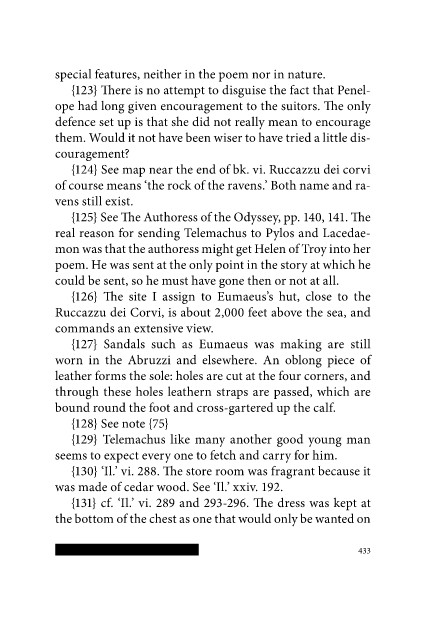Page 434 - the-odyssey
P. 434
special features, neither in the poem nor in nature.
{123} There is no attempt to disguise the fact that Penel-
ope had long given encouragement to the suitors. The only
defence set up is that she did not really mean to encourage
them. Would it not have been wiser to have tried a little dis-
couragement?
{124} See map near the end of bk. vi. Ruccazzu dei corvi
of course means ‘the rock of the ravens.’ Both name and ra-
vens still exist.
{125} See The Authoress of the Odyssey, pp. 140, 141. The
real reason for sending Telemachus to Pylos and Lacedae-
mon was that the authoress might get Helen of Troy into her
poem. He was sent at the only point in the story at which he
could be sent, so he must have gone then or not at all.
{126} The site I assign to Eumaeus’s hut, close to the
Ruccazzu dei Corvi, is about 2,000 feet above the sea, and
commands an extensive view.
{127} Sandals such as Eumaeus was making are still
worn in the Abruzzi and elsewhere. An oblong piece of
leather forms the sole: holes are cut at the four corners, and
through these holes leathern straps are passed, which are
bound round the foot and cross-gartered up the calf.
{128} See note {75}
{129} Telemachus like many another good young man
seems to expect every one to fetch and carry for him.
{130} ‘Il.’ vi. 288. The store room was fragrant because it
was made of cedar wood. See ‘Il.’ xxiv. 192.
{131} cf. ‘Il.’ vi. 289 and 293-296. The dress was kept at
the bottom of the chest as one that would only be wanted on

